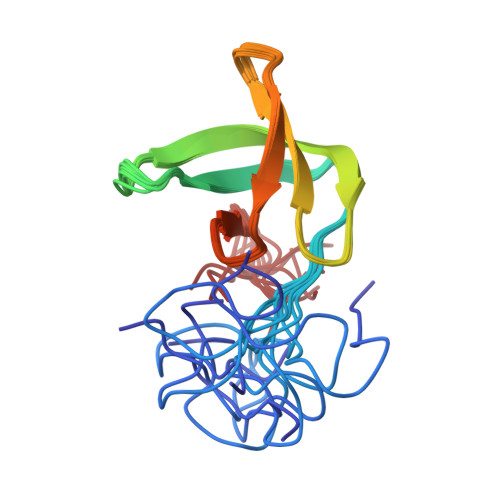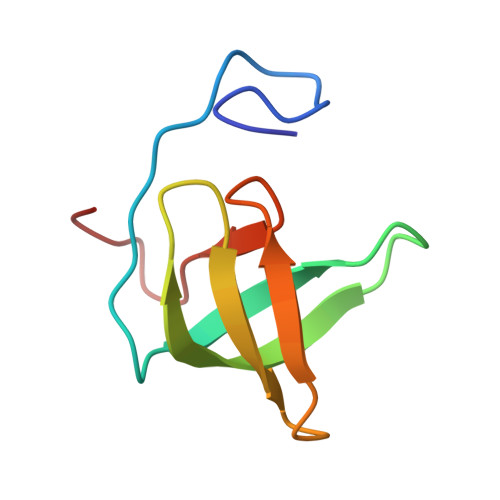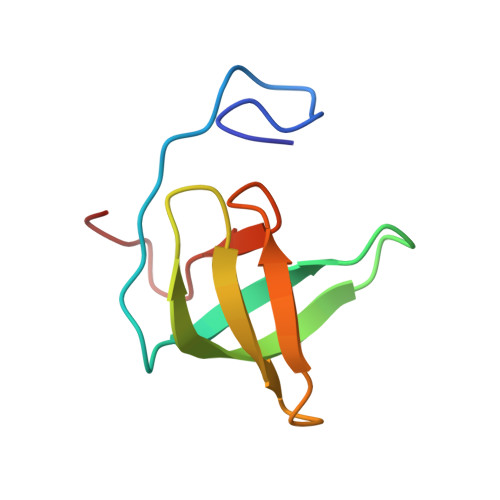Structure of an Atypical Tudor Domain in the Drosophila Polycomblike Protein
Friberg, A., Oddone, A., Klymenko, T., Mueller, J., Sattler, M.(2010) Protein Sci 19: 1906
- PubMed: 20669242
- DOI: https://doi.org/10.1002/pro.476
- Primary Citation of Related Structures:
2XK0 - PubMed Abstract:
Post-translational modifications of histone tails are among the most prominent epigenetic marks and play a critical role in transcriptional control at the level of chromatin. The Polycomblike (Pcl) protein is part of a histone methyltransferase complex (Pcl-PRC2) responsible for high levels of histone H3 K27 trimethylation. Studies in Drosophila larvae suggest that Pcl is required for anchoring Pcl-PRC2 at target genes, but how this is achieved is unknown. Pcl comprises a Tudor domain and two PHD fingers. These domains are known to recognize methylated lysine or arginine residues and could contribute to targeting of Pcl-PRC2. Here, we report an NMR structure of the Tudor domain from Drosophila Pcl (Pcl-Tudor) and binding studies with putative ligands. Pcl-Tudor contains an atypical, incomplete aromatic cage that does not interact with known Tudor domain ligands, such as methylated lysines or arginines. Interestingly, human Pcl orthologs exhibit a complete aromatic cage, suggesting that they may recognize methylated lysines. Structural comparison with other Tudor domains suggests that Pcl-Tudor may engage in intra- or intermolecular interactions through an exposed hydrophobic surface patch.
Organizational Affiliation:
Institute of Structural Biology, Helmholtz Zentrum München, Ingolstädter Landstr. 1, Neuherberg, Germany.
















